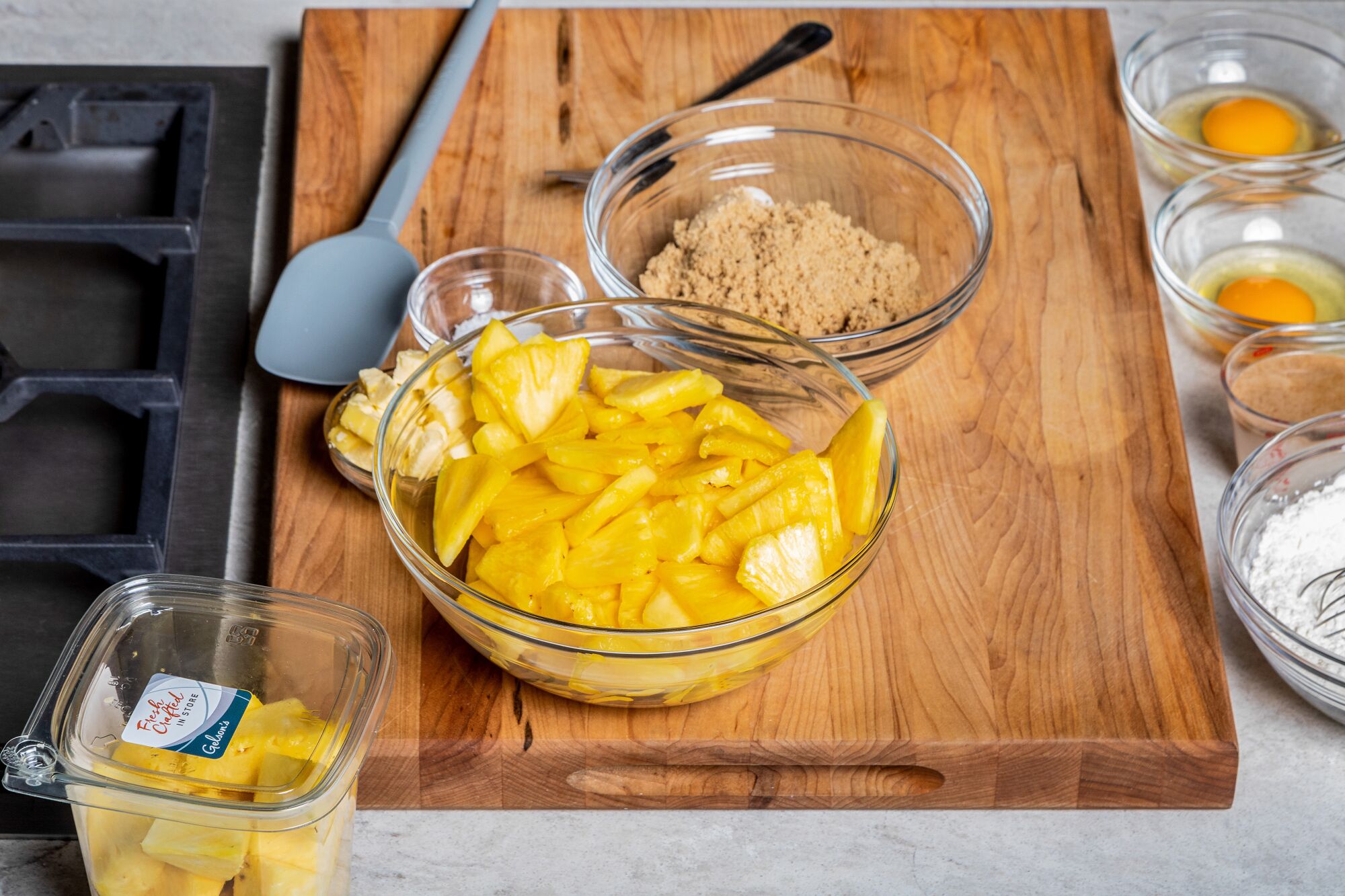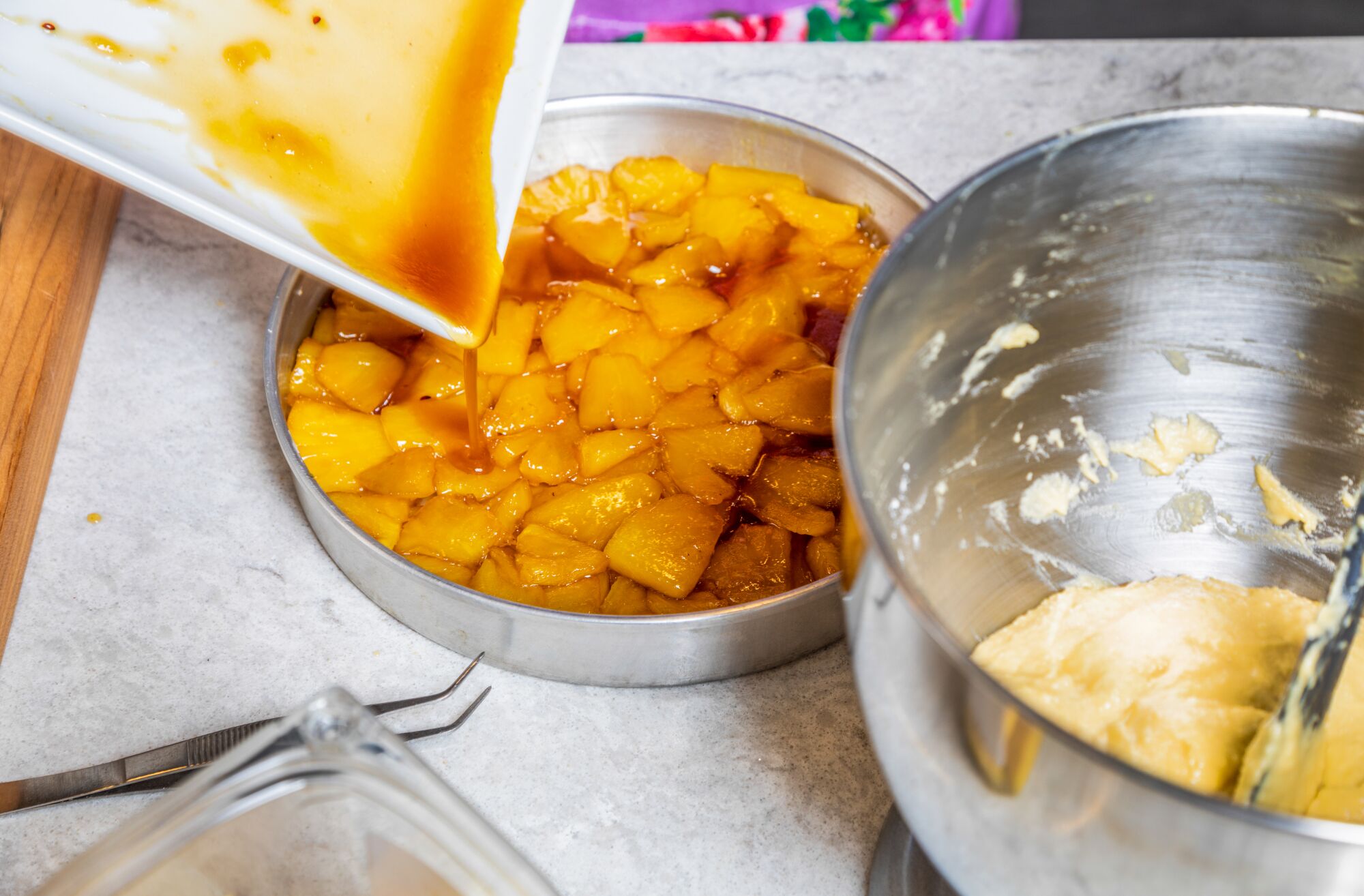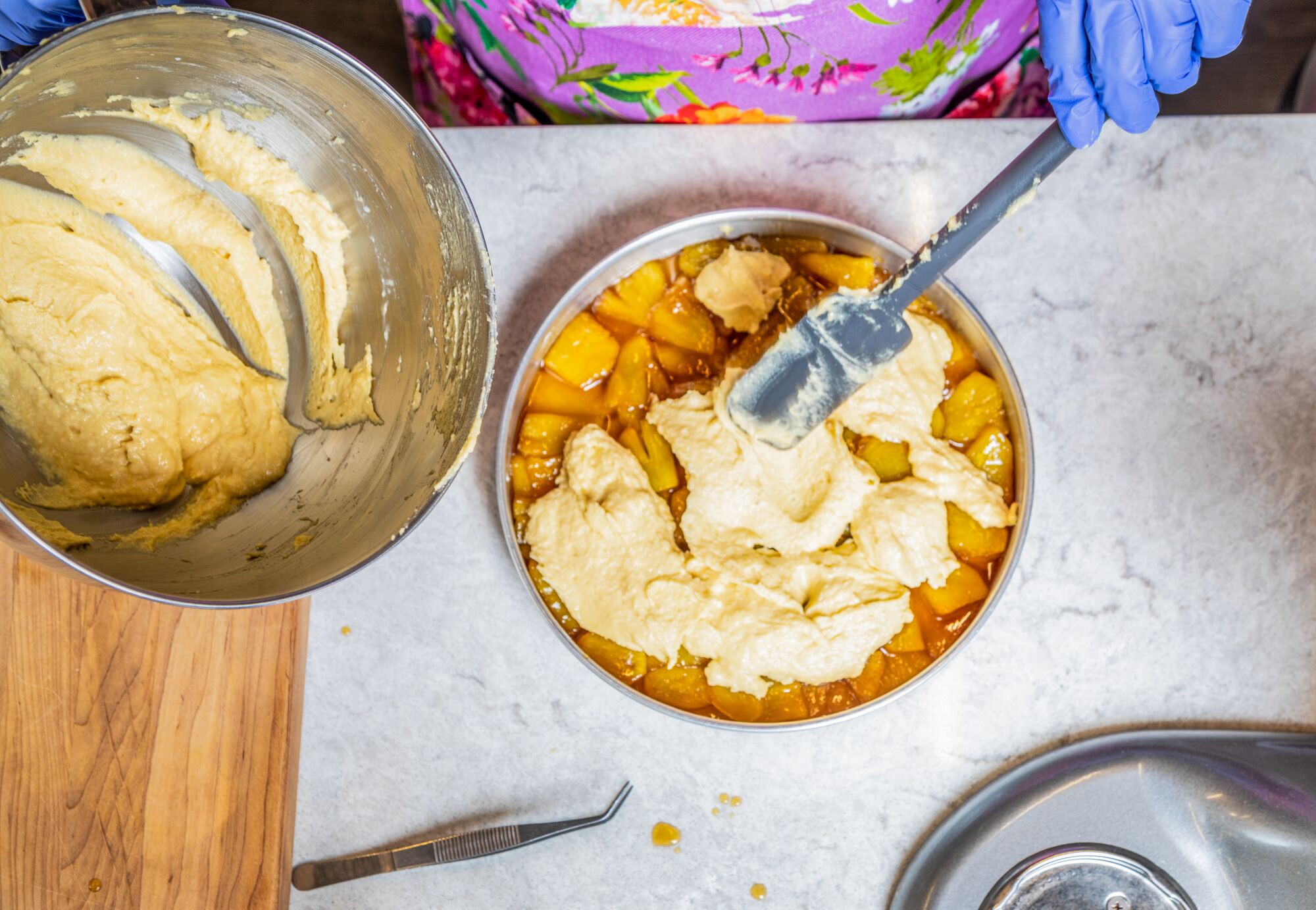Our modern relationship with seasonality is a funny thing. While we often proselytize about eating local, in-season vegetables and fruit, we also love our bananas, mangoes and pineapples — all of which mostly do not grow on a large scale anywhere near us — for our morning smoothies or fruit bowls. We often think of tropical fruit as winter fruit (at least here in the Northern Hemisphere), swooping in to brighten dreary days with their beachy vibes and sun-gold glow. But fruit like mangoes and pineapples are in peak season during the summer (although, yes, they are also available year-round).
Yes, here in Southern California stone fruit and berries abound right now, and I get my fill of them for sure, but my favorite fruit to go HAM on during summer is pineapple. I crave the tropical fruit that connotes lazy sunny days with every tart, refreshing bite. But if you’ve ever been shopping for one, you know that finding a great pineapple is not unlike choosing a ripe melon or avocado. You have to know what to look for (mostly yellow rind), pick at it a bit (the centermost leaves on top should pull away easily) and give it a sniff (at the stalk end, it should smell like, well, a sweet pineapple). And after all that, you have to let it sit for a few days to really ensure it’s ripe. This is the part where my impatience usually gets the best of me.

First you cook pineapple chunks with brown sugar, butter and sea salt so that the pineapple juices reduce to a buttery sauce, for the cake’s topping.
(Ricardo DeAratanha / Los Angeles Times)
But while talking to a grocery store worker in my neighborhood recently, I learned that the pineapple, mangoes and, well, mostly all the prepared fruit sold in plastic containers in the deli section of the store is from fruit that was for sale before but now was too ripe to sell whole. So, instead of picking and prodding and worrying and waiting to see if your pineapple or mango is ripe, you could just buy the prepackaged kind and know that it is.
Now, I’ll admit, this doesn’t work across the board — I’ve had my fair share of rock-hard, awful mango from one of those containers — but by and large, the prepared pineapple is always great. And it’s more convenient if you’re someone who can’t get around to eating a whole one. And obviously, most people already know this: It’s the food snobs and recipe folks like me who feel obligated to insist you break down a whole pineapple yourself. While I have to espouse that belief to keep my job, I will relent on occasion, especially because I often have those containers of pineapple in my fridge from my partner’s shopping trips (he does not share my predilection for needing to cut up fruit “from scratch”).
While I enjoy eating pineapple as is, after more than two pieces, it starts to feel as if the acids in the pineapple are eating away at the inside of my mouth (and well, they kind of are?), so I stick to mostly cooked preparations. One of the things that I’ve devised to make with all those prepared pineapple cubes sitting around is pineapple upside-down cake, one of my favorite summertime treats.

Buttery, caramel-y and tropical — the perfect summer-vibes pineapple upside-down cake.
(Ricardo DeAratanha / Los Angeles Times)
Like most of you, I grew up with perfectly wonderful versions made with canned pineapple rings and maraschino cherries. I find nothing wrong with indulging in that nostalgia from time to time, but using fresh pineapple — especially when it’s already cut up for you — is ironically easier and obviously tastes more vibrant and acidic, all the better to cut through the rich cake batter.
I’ve made enough pineapple upside-down cakes in my life to realize that the batter for such cakes — really all “upside-down” fruit cakes — is intentionally made to be dry because, as the thinking goes, the moisture from the fruit as it cooks will moisten the crumb of the batter above it. And while that does happen to a degree, it never happens enough for my liking, and many recipes result in a super-delicious, moist and sugary fruit topping sitting over a dry, crumbly cake that, unless eaten in equal proportion and chewed in harmonious synchronicity, needs to be chased by a gulp of water to get it down.
My work-around is using an ingredient that is celebrated for giving plenty of tender texture and moisture to cakes without adding extra liquid: almond paste. Typically, whole cakes made with almond paste are baked and topped with more nuts in the form of flakes or slivered almonds, but I prefer it as a base for upside-down fruit cakes particularly because it’s like adding almond extract to a cake batter, and that pairs so well with many fruits. Stone fruits are the obvious match, but I find the perfumed almond flavor gives a great edge to tropical fruits like pineapple too, complementing the latter’s intense acidity.

The batter for this pineapple upside-down cake includes almond paste and helps make a moist cake.
(Ricardo DeAratanha / Los Angeles Times)
I slice up those prepared cubes of pineapple, cook them with a little brown sugar and then top them with the eggy, almond-y cake batter. Once flipped and cooled, the pineapple topping and cake batter fuse together harmoniously, and the cake stays moist for days. I return to it again and again, slicing off shims of tender but slightly chewy (in a good way) cake whenever I need a pick-me-up. And if serving it for a dinner party or to a guest, that’s where the cherries (you thought I forgot?) come back into the fold. Each slice gets a small spoonful of cherry jam — or Luxardo cherries, if you’ve got the spare cash — and a dollop of whipped cream.
It’s the perfect summer cake because you’ll inevitably stop into your local grocery store, sweaty and blistered from a day at the beach, and grab those bowls of pineapple to wake and refresh you, so use what’s left to make this cake. It takes elements of convenience and transforms them into a treat that will keep that relaxed and beachy summer experience going while only requiring a brief foray into the fluorescent glow of the grocery store deli aisle to get started.
Get the recipe:
Time1 hour 30 minutes
YieldsServes 8 to 10
Stay connected with us on social media platform for instant update click here to join our Twitter, & Facebook
We are now on Telegram. Click here to join our channel (@TechiUpdate) and stay updated with the latest Technology headlines.
For all the latest Food and Drinks News Click Here
